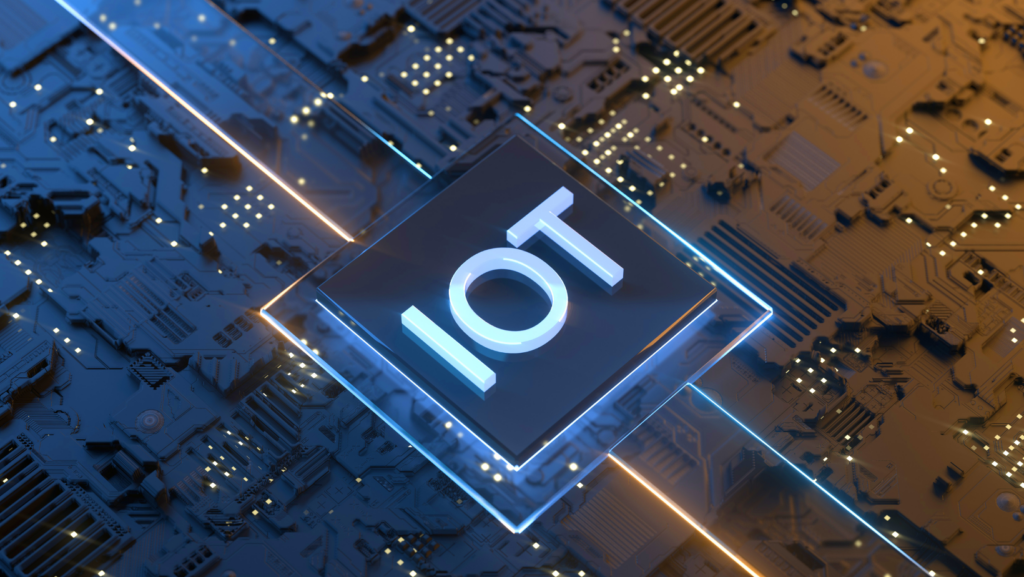In a world where connectivity is king, the Internet of Things (IoT) reigns supreme. It’s transforming how we live, work, and interact with the world around us. But what’s behind this revolution? That’s where IoT development services come in.
IoT Development Services
Diving deeper into the topic, let’s uncover the specifics of IoT development services and the key components of IoT systems.
What Are IoT Development Services?
 IoT development services revolve around the creation of applications that enable smart devices to gather data and interact with the physical world. Primarily, companies deploy these services to harness the power of connectivity and automation, thus augmenting their operational efficiency.
IoT development services revolve around the creation of applications that enable smart devices to gather data and interact with the physical world. Primarily, companies deploy these services to harness the power of connectivity and automation, thus augmenting their operational efficiency.
For instance, connected thermostats in smart homes or real-time tracking systems in logistics are products of IoT development services.
Key Components of IoT Systems
By design, IoT systems are complex and multi-layered, encompassing several crucial components that allow them to function effectively.
- Sensors/Devices: These are the physical entities that capture key metrics from the environment. Temperature sensors in weather stations or heartbeat monitors in healthcare gadgets provide a level of interaction with the physical realm.
- Connectivity: Once sensors capture data, it’s transferred via various networks such as Wi-Fi, LoRaWAN, or cellular.
- Data Processing: After the data’s transferred, software processes it to extract useful insights. A typical example is an AI algorithm that predicts weather patterns based on accumulated sensor data.
- End-user Interface: Finally, this data is presented to users through an interface. For instance, weather apps present processed meteorological data in a user-friendly format.
IoT development services and their key components form the cornerstone of the digital infrastructure driving the increasingly connected world we experience today.
Benefits of IoT Solutions for Businesses

IoT Solutions offer a game-changing prospect for enhancing business operations. Beyond the hype, real benefits materialize when IoT meets the operational fabric of an organization.
Here, we’ll look further into how IoT positively influences operational efficiency and how it fosters an unparalleled customer experience, two vital pillars for any successful business.
Improving Operational Efficiency
With IoT integration, a business can amplify its operational efficiency. For instance, IoT sensors can deliver real-time insights into machine performance in a manufacturing plant. IoT solution, used well, functions like a well-oiled cog, driving other components of a business, ensuring the smooth functioning of operations, and minimizing downtime.
The comprehensiveness of the data collated by IoT sensors makes it possible to pre-empt and proactively address any impending operational glitches. This mode of predictive maintenance, as it’s commonly known, saves a business from incurring extraordinary costs and loss of productivity.
Enhancing Customer Experience
Besides streamlining operations, IoT solutions foster an enriched customer experience. Take smart homes as an instance, where IoT solutions personalize user experiences by understanding and predicting end-user behavior— from adjusting the air conditioning settings to lighting up rooms as soon as someone walks in. IoT solutions keep businesses plugged into contextual, real-time data from customers, enabling them to refine and deliver a hyper-personalized experience. Engaged customers typically demonstrate high brand loyalty, and that’s what every business seeks.
Common Challenges in IoT Development
Succeeding the wonders of IoT requires overcoming a slew of hurdles. A glimpse into these complexities unveils elements like Security Concerns and Integration With Existing Systems as significant points of contention.
Security Concerns
 No factor bears more weight in IoT development than security. Unbeknownst to some, IoT projects pose an array of potential threats. As devices communicate and transfer data unchecked, vulnerabilities surface.
No factor bears more weight in IoT development than security. Unbeknownst to some, IoT projects pose an array of potential threats. As devices communicate and transfer data unchecked, vulnerabilities surface.
These can lead to breaches, exposing sensitive information. For instance, a compromised smart thermostat can provide easy access to a home’s full network. Stakeholders often underestimate the extent of these risks, spotlighting the importance of securing IoT systems.
Integration With Existing Systems
Another crucial challenge lies in integrating newly created IoT applications with currently operating systems. Compatibility plays a key role in ensuring seamless interaction between the two. Conflicts introduce system glitches and inaccurate data readings which hinder optimal function.

